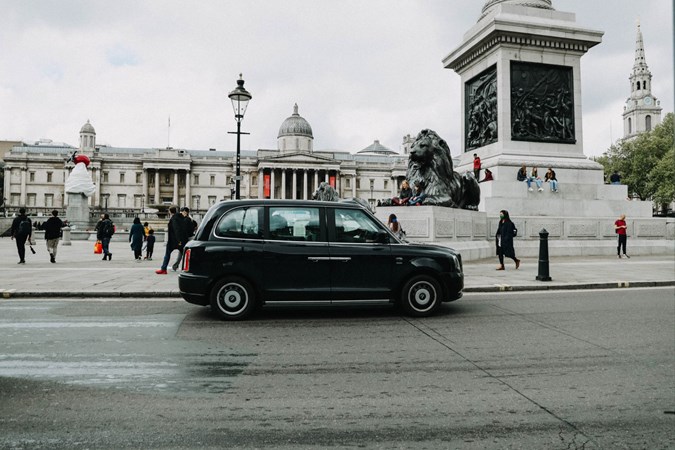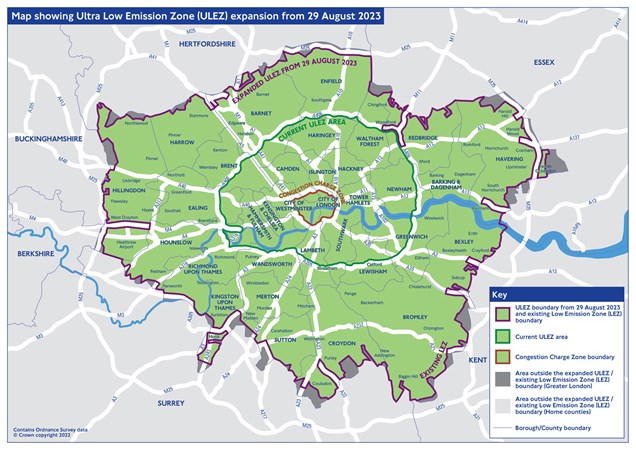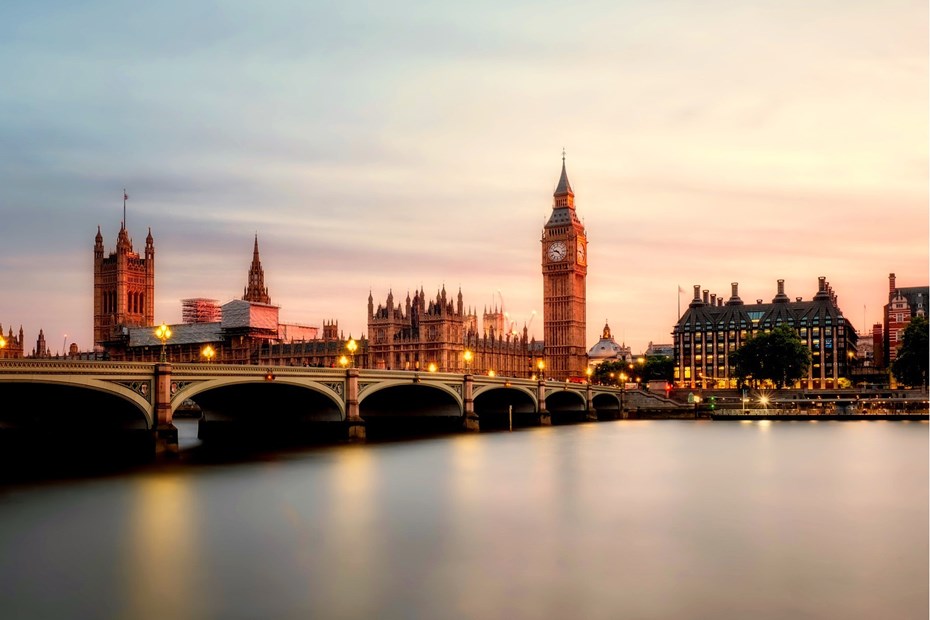The London ULEZ – ultra-low emissions zone – imposes a charge if £12.50 per day on drivers of non-compliant cars and other vehicles. It’s an essential tool for generating money for the city, but new data reveals that it’s not been entirely successful, with a cool £438m of uncollected fines mounting up since 2023.
Having initially been confined within the North and South Circular roads, it now covers every London borough, extending out to the M25 in many places. That makes it the largest low emissions zone in the world. The charge stands no matter how far you drive within the ULEZ, and given the size on the zone, it’s no surprise that Transport for London (TfL) is failing to collect all unpaid fines from ULEZ dodgers.
Just how many ULEZ fines have been issued?
Oh it’s a lot, and the scale of the issue has taken TfL by surprise. The amount of money owed by drivers who’ve failed to pay has only increased following the ULEZ expansion in August 2023. Data revealed by TfL following a freedom of information request by Turo, a car sharing app, shows that 2.4 million penalties have been issued since that date.
TfL’s data also revealed that the number of cars with multiple fines has exploded. Between April 2019 and August 2023, the number of vehicles with more than five outstanding penalties was 21,925. When the time frame is extended until September 2024 that figure jumps to 105,169.
More shockingly, the data also revealed that only 20.2% of these penalties were paid during the 14-day reduced rate period. With over 1.1 million outstanding warrants issued, this shows that many drivers aren’t paying the penalties at all. TfL calculates that there are nearly £438 million in uncollected fines. The single worst offender has racked up 1,077 separate fines in a single vehicle, totalling £240,457 in penalties.
How’s the ULEZ expansion going?
According to the mayor’s office, around 85% of cars in outer London were already ULEZ compliant at the start of the consultation in May 2022. Since then, new reports show compliance has increased to 95%. Additionally, a scrappage scheme is in place, offering £2,000 grants to London residents to replace their non-compliant cars. Similar grants are also available to businesses to get rid of non-compliant vans and minibuses.
The ULEZ does not just affect London residents, as all motorists who drive non-compliant cars to the capital have to pay the charge. Significantly, the ULEZ encompasses Heathrow Airport. Anyone travelling to or leaving Heathrow will have to pay the £12.50 ULEZ charge, on top of the airport’s own pick-up/drop-off and parking fees. International arrivals who hire a car or use a car club at Heathrow will have to make sure that it is ULEZ compliant because they will be responsible for paying the charge.
There is strong opposition to the expanded ULEZ, with polls showing 80% of residents in London’s outer boroughs were against it, despite most deaths occurring in these boroughs in 2019. Opponents have also claimed that the ULEZ is intended to generate money for Transport for London, which has seen its central government funding slashed in recent years. However, Mayor of London Sadiq Khan insisted expanding the ULEZ is a ‘necessary decision’ to save lives and tackle climate change.
What actually is ULEZ?
The London Ultra Low Emission Zone – ULEZ – is an effort to improve air quality in the nation’s capital. It aims to encourage drivers to adopt newer cars with better emission controls by enforcing a charge on older vehicles that emit higher levels of pollution, meaning their owners have to pay to enter the zone every single day except Christmas Day.
The ULEZ operates across all London boroughs up to the existing Low Emission Zone boundary. That’s despite 80% of people in affected areas being opposed to the expansion, which sees thousands of additional drivers having to cough up the £12.50 fee. Heading to Scotland? Check out our guide to Scottish ULEZs.
Mayor of London Sadiq Khan said: ‘The latest evidence shows that air pollution is making us sick from cradle to the grave. Londoners are developing life-changing illnesses, such as cancer, lung disease, dementia and asthma. And it’s especially dangerous for children due to the long-lasting impact on their health and life chances, with kids in our city growing up with stunted lungs.’
On this page you can find out:
- How much the ULEZ charge costs and when it applies
- How to pay the ULEZ charge
- The cost of a ULEZ fine
- View a ULEZ zone map
- Which cars are exempt from the ULEZ charge
What are the London ULEZ regulations?
In a bid to curtail London’s air pollution, London’s ULEZ encompasses every borough controlled by the Greater London Authority, extending as far as the borders of Buckinghamshire, Essex, Hertfordshire, Surrey and Kent. The expanded zone is three times the size of the original ULEZ in central London but, more importantly for UK travellers and arrivals, Heathrow Airport is within its boundaries.
Will the ULEZ expansion affect my travel to Heathrow airport?
Drivers of any vehicle entering the grounds of the airport have to pay a daily charge if the vehicle does not comply with London’s emissions standards – in addition to Heathrow’s own vehicle fees. Motorists driving to Heathrow have until midnight on the third day following the journey to pay the charge, so we recommend paying soon after arriving at the airport to avoid returning to the UK to find a hefty fine waiting for you.
If you’re an international arrival and hire a car, you’ll need to check whether the vehicle complies with ULEZ emission standards first. If it does not, you will be responsible for paying the charge as the renter. However, it is highly unlikely a rental car won’t comply.
ULEZ expansion has come under heavy fire from residents and councils alike. Craig Howell Williams KC questioned the legality of the initiative. Speaking on behalf of Bexley, Bromley, Harrow, Hillingdon and Surrey councils, he told a judicial review that the expansion would ‘bypass legal safeguards’ designed to ensure new charging schemes are ‘properly considered before coming into effect.’ But those concerns were ultimately dismissed.
What is a ULEZ?
A ULEZ is an ‘ultra-low emission zone’, where drivers entering the area are charged for doing so if their vehicle does not meet certain emissions standards.
According to the mayor’s office In June 2023 compliance across all vehicles seen driving in outer London was at 90.9 per cent. The effect of ‘turning on’ the ULEZ expansion led to a four percentage points jump in compliance, to 95.2 per cent in September 2023. It is predicted that the expansion will reduce annual CO2 emissions by 27,000 tonnes in outer London, nearly double that which the central London ULEZ achieved in its first year of operation.
It’s worth noting that the RAC estimates the number of non-compliant cars in London is more like 690,000. There are no figures for how many daily commuters and occasional visitors who live outside the ULEZ will be affected.

The London ULEZ for cars and vans was first introduced in central London in April 2019, expanded over a wider area in October 2021, then reached its current borders in August 2023. It is separate to the London Congestion Charge Zone, which you still have to pay on entry regardless of whether or not you have a ULEZ-compliant car.
How much is the ULEZ charge and when does it apply?
For cars and light commercial vehicles that don’t meet the correct emissions standards, it costs £12.50 per day to enter the London ULEZ, and the charges apply 24 hours a day, seven days a week. This includes all public holidays except Christmas Day (25 December).
For the purposes of the ULEZ charge, a day starts and ends at midnight – so if you enter the zone before midnight and then leave it after midnight you’ll have to pay the ULEZ fee twice.
The ULEZ charge is in addition to the cost of the London Congestion Charge Zone, which is presently £15 per day.
How do you pay the ULEZ charge?
Automatic Number Plate Recognition (ANPR) cameras capture the details of your car as you enter and exit the ULEZ area. You can pay for the charge by phone or online, and you can pay individually each time or set-up an account. There’s even a TfL Pay to Drive in London smartphone app.
If you haven’t got an AutoPay or London Road User Charging Account, you must pay the charge by midnight on the third day after the journey. Note that the phone lines are only open 8am-8pm Monday to Friday.
- UK: 0343 222 2222
- International: +44 343 222 2222
- Textphone: 020 7649 9123 (if you have impaired hearing)
If paying online, be careful to only use the official TfL ULEZ secure payment system. Unofficial websites may be fraudulent, and result in you receiving a fine because you haven’t actually paid for your journey.
What’s the fine for not paying the ULEZ charge?
Fail to pay the regular ULEZ cost on time and you will likely receive a ULEZ Penalty Charge Notice (PCN).
The ULEZ PCN cost is currently £160, though this will be halved to £80 if you pay within the first 14 days.
You can pay – or challenge – the ULEZ PCN online as well.
Where is the ULEZ?
The map below shows the boundaries of the London ULEZ. It covers the vast majority of the Greater London Authority area, extending as far out as the M25 motorway in some places. Note that you don’t have to pay the ULEZ charge for using the M25.
The expanded ULEZ covers a much bigger area than the original zone, which just covered the London Congestion Charge Zone. In 2021, it expanded out to the North and South Circular roads. The map also shows the London Low Emission Zone (LEZ) that applies to lorries and other vehicles with a gross vehicle weight above 3.5 tonnes (3,500kg).
There is a Transport for London online postcode checker if you want to find out if a specific location is within any of the charging zones.
ULEZ map

What cars are exempt from the ULEZ charge?
Cars that are exempt from the ULEZ charge largely rely on modern emissions standards, which vary between petrol and diesel models.
For petrol cars, the Euro 4 emissions standard is the minimum; this generally means any petrol car sold after September 2005 should be automatically exempt, though Euro 4 was first introduced in 2001 so some older cars will be as well.
For diesel cars, the minimum emissions standard is Euro 6, which came into force much more recently in September 2015. Any car or ‘smaller van’ with a diesel engine sold since then should be exempt, though there may be exceptions and many older vehicles are Euro 6 compliant, too.
There are other exemptions, however, including for cars that are more than 40 years old and registered as Historic. A full list of ULEZ exemptions and discounts is available from Transport for London. If your car does not show as exempt on the TfL website but you can prove that it is, you must register it with TfL.
Does my car qualify to pay the ULEZ?
You can find out for sure if your car is liable using the TfL ULEZ number plate checker, but in simple terms, you don’t need to pay if your car falls into these categories:
> Euro 4 (NOx) for petrol cars, vans, minibuses and other specialist vehicles
> Euro 6 (NOx and PM) for diesel cars, vans and minibuses and other specialist vehicles
Your car’s V5C logbook will say which emissions standard category it falls into.
Is there an exemption for disabled drivers?
Disabled people and community transport providers whose vehicles are registered with the DVLA in the disabled vehicle tax class have an extended grace period which exempts them from paying the ULEZ charge until 24 October 2027.
Drivers over the state pension age can apply for the extended grace period even if their vehicle if not registered with the DVLA as being for disabled drivers, though they must be in receipt of Attendance Allowance and hold a Blue Badge.
Do residents have to pay the ULEZ charge?
Before 25 October 2021, people who live inside the ULEZ were not required to pay to drive a non-ULEZ-compliant vehicle within the zone. However, they now must pay the full £12.50 fee to do so. This does not apply if the vehicle remains parked for the day.
How does the ULEZ scrappage scheme work?
All London residents can claim a £2,000 grant to scrap their old, non-ULEZ compliant car and upgrade to one that meets the requirements. Check out our pick of the best ULEZ-compliant cars you can buy for £2,000.
Small business can also claim £7,000 to scrap non-compliant vans (limited to three per company), there’s a £9,000 grant for replacing older minibuses and £10,000 is available to replace Wheelchair Accessible Vehicles.
You can apply for a scrappage scheme grant via the Transport for London website.
Is the Congestion Charge Zone also expanding?
There have been worries that the Congestion Charge Zone, which covers a similar area to the original ULEZ, would be similarly expanded to recover money that Transport for London lost during the coronavirus pandemic.
There were proposals from central government to expand the £15 per day charge to the North and South Circular roads, affecting around four million Londoners.
However, Mayor of London Sadiq Khan has confirmed this will not be happening. London will need to raise extra money in future years, though, meaning that the temporary changes that were made to the congestion charge in June 2021 (raising the price to £15 per day and expanding hours to 10pm) are likely to be made permanent.
Just so you know, we may receive a commission or other compensation from the links on this website - read why you should trust us.








